By Professor Mekuria Bulcha
Introduction
Once again the Oromo are preparing for the celebrations of the Irreecha festival at Lake Arsadee in Bishoftu city 50 km south of Finfinnee (Addis Ababa) in central Oromia. This time the annual national rendezvous takes place on October 1, 2016. Although it is the Oromo equivalent of Thanksgiving,[1] and is essentially a non-political festival, the Irreecha was suppressed by Ethiopian regimes for about a century. Brought back to life by the political and cultural struggle the Oromo people have been waging for decades, today, the festival is playing a primary role in for the survival of Oromo culture and identity. The festival is celebrated in different localities across Oromia as well as transnationally by the Oromo diaspora in many countries around the world. In an article titled “Oromia’s Irreecha Festival – A Revival of an Ancient African Culture: An Attempt to Understand and Explain”, published in September 2015, I have discussed the socio-cultural and historical role of the pan-Oromo symbols and artefacts that are displayed during the Irreecha festivals. I explored and discussed the meanings of the blessings of elders who officiate at the festivals, the environmental ethics which are articulated in the rituals and the performances of artists who entertain the celebrants. In this article, I will (a) discuss the festival in the context of the recognition accorded to it by UNESCO for registration as Intangible Cultural Heritage of Humanity, (b) discuss the contradictions between [the] values and ethics symbolized by the festival and the politics of the Ethiopian regime, (c) explore the significance which millions of Oromo youth who celebrate the festival give to it, and (d) briefly discuss the concerns about celebrating the festival in the context of the prevailing political situation in Oromia.
At the national level, the revival of the Irreecha celebration was started by a few people in the mid-1990s under difficult condition particularly due to restrictions imposed on the organizers by the government. Today it is celebrated by millions of Oromos who converge on Bishoftu from every corner of Oromia and other regions in Ethiopia as well as from other countries in the world.[2] The number of participants keeps on increasing because those who visit it once keep on coming back while new visitors are attracted to it in large numbers every year. Lij Yaareed, a young Oromo in his early twenties, told a reporter last year that he was in Bishoftu for the 17th time to celebrate the Irreecha. A young female respondent, Kunoo, who “grew up with the festival” told the same reporter:
I have been participating in Irreecha since childhood. I have witnessed that the number of participants has been increasing dramatically year after year. Today it has come to the extent that it is difficult to move forward and pass one another. The crowd is thick. I am really excited to see what will happen in the coming few years.[3]
During the last five to ten years the festival has been attracting not only Oromos but others, including tourists and journalists from other parts of the world. As I will explain later, the Oromo youth are very enthusiastic about the festival. In fact, looking at video pictures covering participation in the festival, it seems that they had constituted more than half of the celebrants who have been gathering on the shores of Lake Arsadee during the last three years.
An ‘Intangible Cultural Heritage of Humanity’
Lately, the Irreecha tradition has also caught the attention of the United Nations Economic and Scientific Commission (UNESCO). Last year, UNESCO’s representative in Ethiopia Mr. Alpha Wright visited the Lake Arsadee festival told millions of Oromos and others that Irreecha is an important landmark in the history of mankind and that it will be soon registered as an Intangible Cultural Heritage of Humanity. Article 2, of the UNESCO Convention of 2003 defines “Intangible cultural heritage” as “the practices, representations, expressions, knowledge, skills – as well as the instruments, objects and cultural spaces associated therewith – that communities, groups, and in some cases, individuals recognize as part of their cultural heritage.”[4]
Needless to say that the news of recognition of Irreecha by UNESCO was received gratefully by the Oromo. UNESCO’s recognition was received with excitement because it proved the bankruptcy of the ideology and policy of the Ethiopian state that had denigrated their culture as “pagan and primitive” suppressing parts of it to the edges of extinction. The Irreecha festival is one of the Oromo traditions which was saved from extinction and is revived during the last two decades. One can mention many factors which make the Irreecha an intangible cultural heritage worthy of UNESCO’s recognition and protection. To start with, it is worthwhile to point out that the ideological underpinnings of the Irreecha celebration are deeply rooted in religious traditions which the Oromo had shared with the peoples of northeast Africa in the distant past and which are partially preserved only in Oromia until today. The Irreecha has its roots in the ancient monotheistic religion, Waaqeffanna, and that the Oromo, with the exception [of] religious fundamentalists among Christians and Muslims, participate in its festivals irrespective of their religious backgrounds. The reason is that whether they call themselves Orthodox Christians, Protestants, Catholics or Muslims, the ideological underpinnings of Oromo religious practices is, by and large, Waaqefannaa. Writing about similarities between Waaqefannaa, Christianity and Islam, many scholars[5] have stated that the codes of conduct of the traditional Oromo religion are to a large extent equivalent to the Ten Commandments of the Old Testament. Therefore, the moral counsel officiated by Oromo elders at the Irreecha festivals does not contradict the essence of any religion. In fact, the elders who conduct the Irreecha rituals at Lake Arsadee often are from all the three religions—Waaqeffannaa, Christianity and Islam. The elders thank God and bless the nation as their ancestors did in the past. Representing the different religions of the Oromo, they remind their audience to uphold the Oromo ethics of safuu and nagaa (moral order and peace), reconcile among themselves and pray to God to reconcile with them. They counsel that no hate and fanaticism be given place in Oromia. In short, the Irreecha festival is a sacred rendezvous of an entire nation irrespective of religion, sex, age and class. As I have explained elsewhere,[6] the festival is also an expression of Oromo respect for nature and pursuit for harmony. It is about peace not only among humans but also between human beings and nature. The green grass carried by every participant, luxuriant vegetation and abundant water against which the artists perform, provides a symbolic connection with God and nature. It suggests that the Oromo are and will be at peace with God, humans and with nature.
A philosophy of life
The Irreecha festival is an occasion when the haayyuu (elders of the nation) thank God and bless their people and land as their ancestors did. It is an event when they remind the Oromo about the traditions of their ancestors and give them advice to uphold the Oromo ethics of safuu and nagaa as well as reconcile among themselves, and pray to God for his mercy and reconciliation with them. As a concept, safuu means the righteousness and benign moral order required for life to continue and nagaa connotes individual as well as collective well-being and security. Thus, as codes of conduct nagaa and safuu interlock and guide behavior and promote peace and harmony. Normally, every Oromo is supposed to abide by these principles even today. In the past, the result was the harmony which permeated the social world and the bounty and beauty which characterized the natural environment in Oromia and were described by European travelers who visited the region in the late nineteenth century.
Stressing the important moral and philosophical messages imbricated in the Oromo concept of nagaa and the analogous ancient Egyptian concept of maat, philosophy professor Charles Verharen advices us to pay attention to both thought systems arguing that “philosophies are the guiding foundations of cultures”, and that “non-African philosophies have failed” Africa.[7] He suggests that in order to rescue itself from the multifaceted catastrophe facing it, and to plan for the future, Africa must recapture its history and find its own philosophy. Verharen observes that the ethics in both the ancient Egyptian thought and the traditional Oromo religion, Waaqeffannaa, and suggests that the similarities between them may not be accidental but signs of possible linkages between the two philosophies. He believes that studying the traditional Oromo cosmology will help us to re-conceptualize African philosophy. In his view, “The philosophical principles of maat and nagaa promise an African model for passing over life on to future generations in these perilous times.”[8] Regrettably, mankind is facing dangerous times. Religious fanaticism and unscrupulous exploitation of Mother Earth for material benefits are pushing mankind already to the edges of unprecedented chaos and destruction. All moral boundaries are being trespassed and innocent children, women and men are murdered in the name of religion. Environmental destruction is threatening life on earth. In other words, the world is experiencing the exact opposite of what the principles of nagaa and maat prescribe.
The recognition of Irreecha by UNESCO for registration as a cultural heritage for humanity is indeed a recognition of a philosophy of survival. Oromo culture has evolved as an integral part of nature. One cannot celebrate the irreechaa festivals in a desert. Green grass, flowers and a body of water amid green meadows are part of natural “paraphernalia” of the irreecha festival. As reflected in the festival, the Oromo make ‘pilgrimages’ to nature to thank God for his generous gifts of the sources of life he bestows them through Mother Earth. The Oromo attribute safuu, the ethical considerations that guide human relationships, also to nature. Human and ecological survival overlap or are seen as interdependent. Humanity is embedded in and is interconnected with nature.
What we had, what we lack, what we must reclaim
Nations around the world organize parades for different reasons. Some organize them to commemorate historical events such as their victories in battles or day of national independence. Others use parades to exhibit their cultural achievements or display technological progress. The Irreecha festival, in the form it takes today is, by and large, is an annual national rendezvous organized to celebrate the revival of Oromo culture. It also mirrors Oromo victory over attempted destruction of their culture by Ethiopian regimes in the past. By and large, the costumes which the majority in the parade wear and the artefacts they carry reflect the culture and history which the different branches of the Oromo nation had shared and preserved.
The significance of the festival is reflected not only in the artefacts displayed in the parade, but also in the gentle attitude and serene atmosphere reflected in the gathering and the amazing harmony which pervades a festival of which the participants are millions of people. The festival looks like a family gathering; thousands of small children accompany parents. The parade proceeds peacefully and ends without incidents. The behavior of participants is guided by the nagaa and safuu codes of conduct mentioned above. An overview of cultural heritage reflected in the festival tells us three things: (a) what the Oromo had in the past, (b) what they had lost or were denied under Abyssinian rule, and (b) what they should reclaim.
The tangible and intangible artefacts which are displayed at the Irreecha festival constitute the pan-Oromo gadaa cultural heritage which were described by many scholars. Together, they symbolize justice, peace, and sovereignty. By and large, they are symbolic artefacts from the past Oromo gadaa republics. The bokkuu, the scepter which is carried by men, is the symbol of the gadaa political system which signifies democracy and justice. Another symbol of the gadaa system is siiqqee, the scepter carried by women. It symbolizes the institution which protected the rights and sanctioned the dignity of women in Oromia in the past. The bokkuu and siqqee as well as a range of other pre-colonial pan-Oromo gadaa symbols which are lined-up and displayed prominently in the Irreecha parades everywhere reinforce the memories and values which are shared by the Oromo in general. However, we know that today the tangible and intangible cultural artefacts which we see in the Irreecha parades do not symbolize what we actually have[, but] they remind us of what we definitvely had and then lost, and will unconditionally recover. The current Ethiopian regime permits the Oromo to carry symbolic artefacts in parades, but does not give them the right to exercise the rights and freedoms the artefacts symbolize. Thus, we read both sides of the bokkuu at one and the same time—the democratic system our ancestors had in the past and its deprivation under alien rule at present for the last 130 years. We “read” democracy on one side while the other side reminds us simultaneously the utter lack of democracy and of the total absence the rule of law. When we look at the bokkuu carried by thousands of men in the parade, we “see” what we do not have. Under the current regime the Oromo face arrests and incarcerations without warrant, torture and extra-judicial killings, disppearance without trace, and eviction from (their) lands and homes. The siqqee can be “read” in the same manner. Under gadaa, it was a sign for women’s defence against oppressive husband or male chauvinists in the village (society). Then, protection was available and defense was possible. Not now. There is no law or moral order to defend Oromo women against the horror of rape by the security forces of the Ethiopian regime in their homes and in jails throughout Oromia.
The green grass that the celebrants carry and the water in the background tell us also a story that has two sides. On the one hand they tell us about the fertility, bounty and bounty which God has bestowed to the Oromia country – in other words the bounty for which they thank Him and pray to Him. It also tells as about the care and respect with which the Oromo treated traditionally the natural environment. On the other hand they tell us about the devastating environmental destruction that is going on in Oromia at this moment. They tell us about the pollution of our rivers and lakes by land grabbers and mining companies. The remind us about the destruction Oromia’s remaining forest patches by fire and illegal logging, and indeed, about the price our youth have paid with their lives to protect them.
By bringing out these symbols ceremonially once again, the Irreecha festival is enabling us to “read” two histories of the same people (the Oromo) at once. Although they are from the past, the symbols tell us more about the present: who we are and what we lack as a people collectively. They construct a narrative which holds us together as a people and provide us with bases for imagination and collective action to reclaim what is taken from us. Irrespective of the atrocities being committed by the present regime against our people, the Irreecha festival, provides them, particularly the young generation a vision of a bright future which can be built on our democratic heritage.
Shared understanding, unity, identity, dignity and solidarity
Writing about the significance of intangible cultural heritages, UNESCO notes that “There are things that we regard as important to preserve for future generations” and goes on to say that they are important “because they create a certain emotion within us, or because they make us feel as though we belong to something–a country, a tradition, a way of life.”[9] That is exactly what Irreecha does. As indicated above, one of the factors which adds significance to the Irreecha festival is the historical and cultural consciousness it raises among participants, particularly the Oromo youth who constitute the majority. The past is communicated to them and to others not only by elders who lead the festival, but also through the rich symbols of the Oromo gadaa culture, the attire of the multitude who march in harmony, the dignity with which the Oromo conduct their collective social and political affairs, and the pride with which they are re-asserting their culture and identity at present albeit against great odds.
The positive emotions and thoughts which the Irreecha festival arouses among the Oromo youth are more than what one can guess. Using interviews made by a reporter from the Oromia Broadcasting System (OBS) with 12 (7 female and 5 male) young participants during the 2015 festival at Lake Arsadee,[10] I will discuss briefly their perceptions and interpretations of the Irreecha festival. When one listens to these young men and women the themes that emerge are: common understanding, identity, a feeling of great pride and joy in their heritage, unity and sense of belonging to community, a strong sense of Oromummaa, and a vision of what the Oromo can do together in the future.
The young participants in question are experiencing the resurrection of their nation and partaking in the reconstruction and reinterpretation of its collective memory through the Irreecha festival. Common understanding is one of the themes that emerge from the responses of the young respondents. Charles Taylor writes “Something is common when it exists not just for me and you, but for us, acknowledged as such.” The festival creates a “collective reality” and sense of history. By collective reality I mean a state of being of the same mind, or sharing of understanding about a common past and having aspirations about a common future. The feelings and thoughts which the festival creates are “inter-subjectively” shared by the young participants. Gammada, one of the young male respondents told the reporter that the Irreecha festival is “first, a great place where a reciprocal discovery of the feelings in one another occurs. Secondly, it is a stage on which you are free to support or reject whatever you like or dislike. Thirdly, it the stage on which I learn from you and you learn from me. Everybody learns from one another.”
Identity (eenyummaa in the Oromo language) is another important theme raised by nearly all of the young respondents. They felt the Irreecha festival as an expression of Oromo identity. Sociologists say that collective identity is constructed not only in and of the collectivity’s present life, but also in reconstructing its earlier life. Thus, for Ilillii, one of the female respondents, “Irreecha is all about the expression of identity – Oromummaa [being Oromo]. Since it is only the Oromo who have the tradition, the youth are motivated to learn more about their identity.” She means about the meanings of the tangible and intangible historical and cultural artefacts which was looking at the festival while answering the questions of the reporter. Kunoo expresses this in depth. She says “The Oromo thank Waaqa [God] through their culture which expresses their identity.” Explaining her statement she adds, “For me, Irreecha is my identity, because when the Oromo people first created it, they made it in harmony with their ethos of Thanksgiving to Waaqa. Thus, for me participating in Irreecha is upholding my identity.” Abdiisa goes further along the same line saying “Irreecha is our identity. Everything in it is about us Oromo. It is unique to us. It is the symbol of our identity. It cannot be separated from us. Ireecha, I think, is in our blood.” Jaalallee and Firaa-ol share Abdiisaa’s view. Jaalallee says “Ireecha is our festval. It is a big occasion where everyone see each. This makes me happy. I feel very much happy for my being Oromo. We see numerous things which make us happy.” Firaa-ol says “I am extremely happy about my being Oromo. The Oromo are participating in the festival in very large number. That makes me happy.”
The interviews indicate a strong feelings of pride which the Irreecha festival creates among participants. The young respondents in the OBS documentary talk about the great sense of pride they felt in belonging to a national community which has such a tradition – they express the positive feeling of being Oromo which the festival had aroused in them. Biiftu says that since the Irreecha “expresses our culture, the large number of participants in itself is our pride. We are number one for having such a magnificent culture. It makes me feel proud.” For Muhee, “Irreecha is not only a unique festival for the Oromo, but also for the whole world.” Apparently overwhelmed by the color, magnitude and magnificence of the festival he says, “I haven’t seen such a huge gathering on any festival. This is my first time to participate. The variety of beautiful costumes, the huge number of youth, elders and other participants make me proud.” Bosonee joins Muhee saying “I feel very proud. I consider this a great day. I am extremely happy to take part in one of the biggest festivals in the world.” Keenboon is another respondent who finds happiness in the magnitude of the festival and immensity of the number of participants. She says that such large number participants have come from different areas and counties in Oromia to celebrate the Irreecha makes her proud in being Oromo. She stresses the significance of the festival in strengthening Oromummaa and Oromo nationalism. Boontuu who seems to find pride in the variety of Oromo cultural artifacts displayed at the festival, among others, says “The participants are from different areas. It is so beautiful. It is a source of my pride. It is what every Oromo must be proud about as well.” Gammadda joins the two female respondents saying,
Anytime I come to the Irreecha, I enjoy a special feeling of Oromummaa. This is because I join Oromos coming from every corner: from the north, the south, from east and west. I observe the spectacular variety in culture, costumes, and hear beautiful songs at the event. All this makes Irreecha one of the greatest events; it makes me proud of my identity. It stimulates me to learn more about Oromummaa.
Unity is another theme raised by most of the respondents. As expressed by Gammadaa “Irreecha is a symbol of Oromo unity. It is the only festival where the Oromo join for a clear and sole purpose of unity and Oromummaa.” According to Abdiisaa, Irreecha is “meaningfully contributing to Oromo unity and solidarity. The fact that the people are gathering in such large number every year shows this.” Kunoo joins her male counterparts saying,
Irreecha has a special place in strengthening unity since the people are not only displaying the varieties of Oromo costumes but also discuss together, share views in different dialects and sing Maree hoo as one. This shows unity. Irreecha is very important in strengthening unity…. It is important specifically for the youth to strengthen our unity. I am enjoying it and feeling happy about it.
For Boontuu, Irreecha is “an extraordinary gathering at which enormous number of people meet. Songs and prayers take place. The event is conducive for promoting unity and love among the youth, and the Oromo in general.” Another female respondent, Bosonee, says that “Irreecha is an ever growing festival inside and outside Oromia. We Oromos strengthen each other by coming together for the festival. We promote our culture like our costumes, songs and in many other ways. We learn more for ourselves.”
When marginalized and oppressed communities attach meanings to events and artefacts to signify their collective experience, they share not only a history but also a belief. The OBS documentary indicates a positive belief and vision which the Oromo youth have about their nation’s future. The vision is the result of what they saw at the festival–the size of the gathering, the variety, color and beauty that characterize the Oromo nation, and the spontaneity and unforced unity of the multitude. The tranquility and familial spirit in spite of immensity of the participants’ number is beyond imagination. In general, the feeling which Irreecha festival seems to give the young respondents is a strong belief in Oromo capacity to achieve whatever they may want if they act together. Biiftuu says
We came to this place from different localities in Oromia which are located far apart. We came here because we have similar views about being Oromo. We share Oromummaa. Like the people, ideas are also found scattered all over the country. We must also bring different views together. If we consolidate our ideas about issues of common concern and unite we can achieve greater goals.
In fact that was what happened. The Oromo youth could act together and stop the Master Plan which had targeted millions of Oromos for eviction and dispossession. If implemented, it could also destroy the historic Ireecha grounds. For this reason, the Oromo, the youth in particular rejected the Master Plan strongly. Since then (September 2015) they have been doing great things together and with the majority of their people. Obviously, the young respondents were not alone in having the feelings described here. The feelings were shared by other Oromos who were at the festival in Bishoftu and those who watched it on TV. It is possible to say that the Irreecha festival is one of the mirrors through which the Oromo society “looks” at itself today, that is to say imagines, feels or knows about its own existence as a nation. It is an event and platform for the expression of Oromo history and culture in symbolic artefacts, songs and dances and massive parades. It connects the Oromo people with one another and to their common past. It introduces the Oromo youth to their heritage, motivates them to preserve it and pass it to the coming generation. As I have pointed out in the article mentioned above, asked by a journalist what he was thinking about the Irreecha in 2014, a young celebrants replied “I don’t have a word to express what I see or feel. I believe that that this is my culture and religion at the same time. This is what was forwarded to us by our ancestors; and it is what I will forward to my children.” He is not alone in having that “feeling”. Given the boundless pride which the young respondents discussed in this article express about Irreecha and Oromummaa, it is possible to conclude that his feelings are shared by millions of Oromo youth. That means the recovery, revival and survival of the Oromo culture is assured. To have such a young generation, like the ones I have discussed above, who have the courage and intelligence, is to be a blessed nation– a nation which has a future.
Celebrating Irreecha under a vicious repressive rule
Reporting about the promise which UNESCO representative gave last year concerning the registration of Irreecha as Intangible Cultural Heritage of Humanity, a journalist concluded that the Oromo people will celebrate the next festival with joy with the rest of the world. Indeed, they will celebrate the festival during this Sunday, but, regrettably, it is difficult to expect a joyous mood under the prevailing political conditions. Oromia is under a vicious military occupation since November 2015 and the entire Oromo nation is waging a peaceful struggle to get rid of it. However, it is expected that the Oromo will converge on Bishoftu as usual to participate in the Irreeech festival. Given the weight of the atrocities which the Ethiopian regime had committed against them since November 2015, the Oromo mood will be less relaxed than ever before. However, that may not mean they will turn the festival into an open protest let alone violet one. For them, the occasion is sacred and requires tranquility. To express their anger in a protest would violate the spirit of an occasion which the Oromo greatly value.
However, as we all know the ruling Tigrayan elite are nervous than ever before and the possibility of their irrational interference is very high. There is no moral boundary which they will not cross to harm their enemies, particularly the Oromo. In the beginning of September 2016 they killed the only son of a woman and forced her at gun point to sit on his dead body, beating her with gun butts and breaking her bones. Her son’s crime was being a young Oromo. Her crime was running into the street and lifting his dead body. The regime’s guards allegedly set Kilinto prison, on the outskirt of Finfinne, on fire in which hundreds of political prisoners, most of them Oromo, were incarcerated. Over 20 prisoners were burnt to death. Since November 2015, over 1000 Oromos, most of them young students, were killed and thousands have been injured. Tens of thousands have been imprisoned. When asked by a journalist about his feelings when he passed the finishing line in Marathon race in the Rio Olympics and crossed his hands over his head, athlete Fayyisa Lellisa said that he “had flashbacks of the enormous tragedy happening back home ..Thoughts about the suffering of my people flooded into my mind and strengthened my resolve.”
As we look forward to the great annual Irreecha festival, the enormous tragedy happening in Oromia is our greatest concern. The 2016 Irreecha festival is taking place in total absence of security in Oromia. But that seems not to stop the Oromo people who have defeated fear long ago and are ready to participate in the spiritually rejuvenating festival of the Irreecha. The Oromo have vowed to pay what it costs and stop the atrocities once and for all. Our resolve in diaspora is to stand on the side of our people in whichever way we can end their suffering, and hope to celebrate Irreecha together in freedom where the expressions of gadaa democracy are not only symbolic but reality.
__________________________________
[1] The festival is celebrated bi-annually in different parts of the Oromo country. The Irreecha Birra festival is celebrated in the month of September and Irreecha Arfaasaa in the month of April. The first marks the end of the rainy season and the beginning of harvest time while second is to welcome the rains and the beginning of the planting season.
[2] According to Tafari Negusie Taafa, between 5 and 6 million people had participated in the Irreecha festival in September 2015, Oromia Broadcasting Service (OSB), February 8, 2016
[3] See Irreecha: Colour and treasure of Oromo by Amensisa Ifa, Oromia Broadcasting System, video, October 2015
[4] See UNESCO, Convention for the Safeguarding of the Intangible Cultural Heritage, Paris 17 October 2003.
[5] Among them we find Emperor Menelik’s court chronicler and historian Asme, the Dutch Catholic missionary and anthropologist, Joseph Van de Loo, and the French missionary Martin de Salviac.
[6] Mekuria Bulcha, “Religion and Social Relations in Oromo Tradition,” in Proceedings of the Twelfth Annual Conference of Oromo Studies, State University of Washington, Seattle, July 25-26, 1998.
[7] Charles Verharen “Comparing Oromo and Ancient Egyptian Philosophy”, Journal of Oromo Studies, volume 15, no. 2, 2008, p. 5.
[8] Ibid. p. 26
[9] UNESCO, What is Intangible Cultural Heritage?, http://www.unesco.org/culture/ich/doc/src/01851-EN
[10] See Irreecha: Colour and treasure of Oromo by Amensisa Ifa, ibid

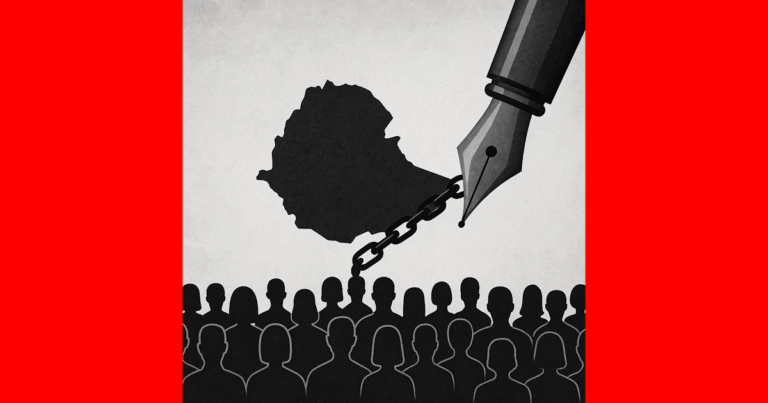
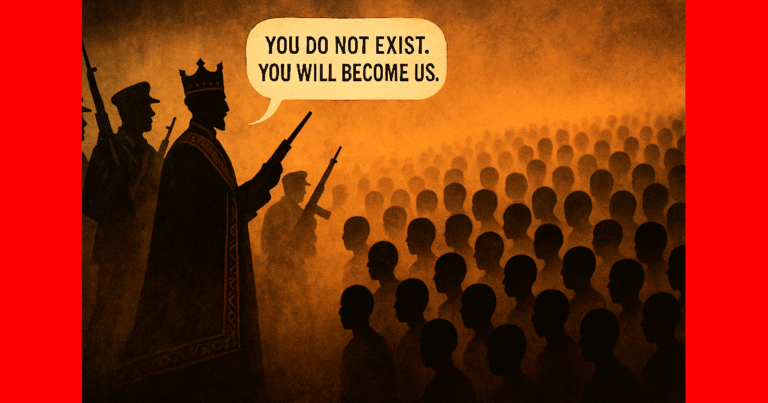
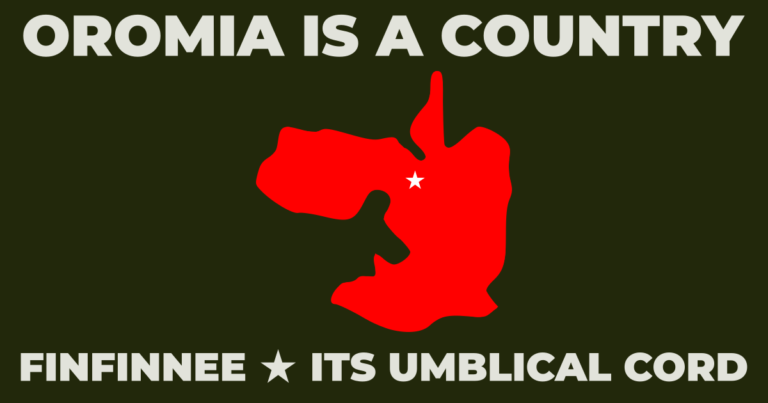
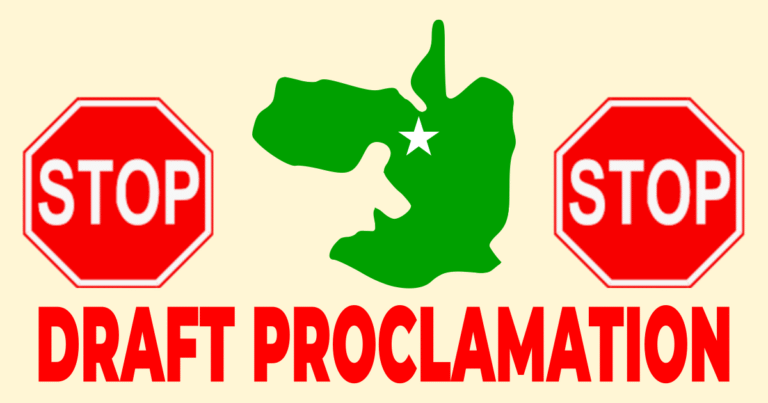
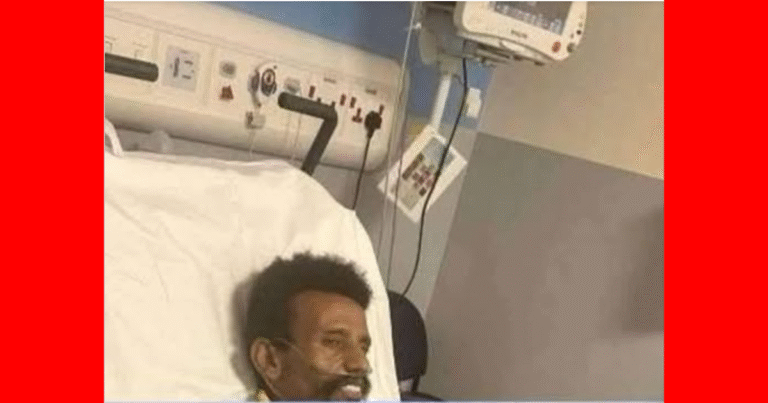
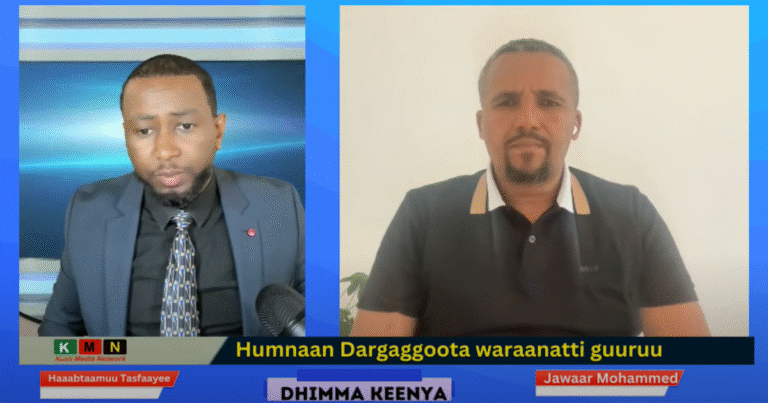
34412 522528Fascinating blog! Is your theme custom made or did you download it from somewhere? A design like yours with a few simple adjustements would really make my blog shine. Please let me know where you got your design. Thanks a lot 93243